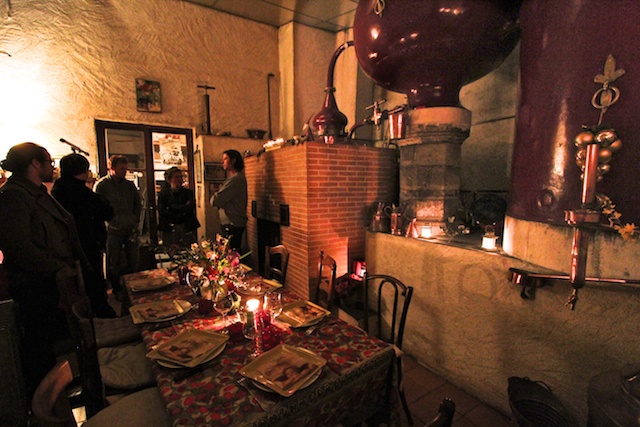France – Day 5: Age Worthy

For the third year in a row we arrived at the home of Claudine and Gerald at Dudognon, located in the heart of Cognac's Grand Champagne region. This time, however, it was just a social call. While we carry their general line-up of expressions and believe deeply in the quality of their distillates, we've had a tough time committing to something exclusive due to the uniqueness of their brandy.
What makes Dudognon Cognac so distinct?
The fact that it's the purest Cognac in existence – no added sweeteners, no caramel coloring, and no boise.
That might sound like a bonus to purists (and it most definitely is), but not everyone is ready for what Grand Champagne Cognac tastes like when you leave it unadulterated. Whereas great wine needs to mature in the bottle, Grand Champagne Cognac – made from wines with extremely high acid content – needs time to mature in the cask.

While those who know good Cognac applaud Dudognon and continue to purchase their selections, first-timers looking for soft and sweet oak juice get whacked over the head with reality. It's like drinking chardonnay with no malolactic fermentation or oak maturation – you realize what the actual liquid tastes like before its been sexed up and manipulated. That's not to say I have a problem with sweetened spirits because I don't. However, I don't get why a Cognac house would want to market the brilliance of a specific terroir, with its potential for greatness and nuance, then obliterate the flavors they pretend to celebrate.
For everyday drinkers like a VS or VSOP expression, a little sugar goes a long way. But why pay $200 for Grand Cru Burgundy if someone's just going to slap some new oak on it and drink it tomorrow?

Claudine and Gerald feel the same way about their Cognac, which is why they respect it by leaving it untouched. However, there's no denying that we still live in a world where quality and "Wow, that's smooth!" go hand-in-hand. 70% of the global population still thinks "if it doesn't burn, it must be good."
The easiest way to take the bite out of your brandy is by adding sugar, just like the best way to balance the acidity in wine is with riper fruit. But there are still a few folks left out there who are willing to put their wine bottles in a cellar, forget about them for a decade or two, and let them come around naturally. Lucky enough for those people, there are still a few Grand Champagne Cognac producers willing to do the same thing in cask. But how many consumers understand and appreciate brandy on the level necessary to support them?
At the end of the evening Claudine pulled out the only selection in her portfolio we had never tasted before: the Paulin – a 60 year old marriage of their oldest stocks at Dudognon, just released for the first time early last year. It was sublime. Heavenly. Rich and delicate in ways I had never thought possible, yet without a drop of sweetness on the palate. When someone can achieve that level of oak integration over time (only by creating a spirit capable of maintaining its character over six decades) you almost can't believe what you're tasting. The Paulin is easily the best brandy I've ever tasted – by a long shot. In my mind, it's a masterpiece that no other producer can touch.
"This has never been sold in the United States?" I asked, unable to believe it.
It looks like we'll have to remedy that.
-David Driscoll
